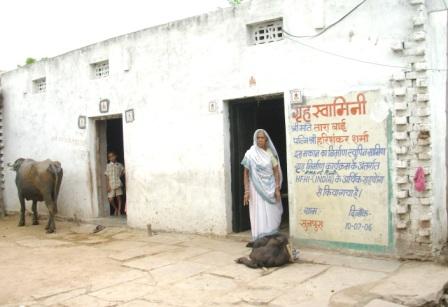URBANIZATION OF RURAL INDIA, a Project Report By Dipika Tuteja
Download Pdf:
Rural-Development-Urbanization-of-Rural-India
URBANIZATION OF RURAL INDIA
Project Background
India is on the “brink of an urban revolution” with its population in towns and cities expected to reach 600 million by 2031, according to a new UN-backed report which pegged the gap in urban infrastructure investment in the country over the next 20 years at a whopping $827 billion.
Over the last two decades, India’s urban population increased from 217 million to 377 million. PTI
Over the last two decades, India’s urban population increased from 217 million to 377 million and this is expected to reach 600 million, or 40 percent of the population by 2031.
Recent estimates show that the cost of environmental degradation, largely driven by sprawling cities, is “enormous” and is reducing India’s GDP by 5.7 percent or about $80 billion annually. Since most of the people from distant villages, when they migrate into cities, usually land up in slums. Therefore, reducing migration from villages means automatic reduction in slums.
It is important to recognize the strong link between reduction of poverty and the provision of basic amenities to the population, especially those living in rural areas. Since the bulk of the poor in India is in rural areas, and improved infrastructure would contribute to poverty reduction. Such provision of civil infra-structure is not only a key component of rural development but also an important ingredient in ensuring any sustainable poverty reduction program. The proper development of infrastructure in rural areas improves rural economy and quality of life. It promotes better productivity, increased agricultural incomes and adequate employment.
Given the fact that rural areas differ from their urban counterparts in terms of per capita income, population density and average size of agglomeration, infrastructure-related problems in rural areas are different from those of urban areas. Therefore, it is necessary to create different customized models for infrastructure improvement in rural areas for developing modern habitat having high quality water supply and sanitation, full range of connectivity, provision for future expansion.
Government alone cannot address the issue of providing proper rural infra-structure and civic amenities. Building of this will require local initiative and participation as such facilities involve operation and maintenance. Sensing this need, we have undertaken this study to help rural communities to build necessary civil infra-structures.
These initiatives are aimed at improving quality of life in the adopted areas and bringing much needed comfort to women, children and poor in general and controlling or limiting migration to the cities.
Sansad Adarsh Gram Yojana, SAGY, is a rural development programme broadly focusing upon the development in the villages which includes social development, cultural development and spread motivation among the people on social mobilization of the village community. The programme was launched by the Prime Minister of India, Narendra Modi on the birth anniversary of Jayprakash Narayan, on 11 October 2014.
ABSTRACT ABOUT THE PROJECT
The study describes Urbanization of Rural Areas, as a model for energizing the rural economy in India and to slow down rural – urban migration which research has shown to be harmful to both; rural and urban people of India and their regions. The model presented here is designed to use the resources existing in social, traditional, cultural, legal, ethnic, religious, economic and political layers of the rural society and seeks to enable the region to build upon them to generate resources. The study describes implementation of the scheme in one region of rural India, which could be replicated on broad principles in other parts of country.
Mission & Objectives
- Rural Development through Education
- Health Care
- Empowerment of women
- Water Management
- Infrastructure development
Aim of the Proposal
To develop a cluster of Model Villages through
- Awareness
- Construction of toilets in houses
- Garbage management
- Construction of rain water harvesting structures
- Eradicate open defecation
- Medical health centers
- Common market place
- Skill development
- Women empowerment
In order to convert the identified villages into an Adarsh Gram through the specified activities, the following strategies are envisioned:
- Activities to energize and mobilize the community towards positive common action
- Participatory planning exercise for identifying peoples’ needs and priorities in an integrated manner
- Converging resources
- Repairing and renovating existing infrastructure to the extent possible
- Strengthening the Gram Panchayats and peoples’ institutions within them
- Promoting transparency and accountability
PROJECT CONCEPT
The study is titled as “The Urbanization of Rural Area: A Case Study for Rural Development” where the villages are adopted by ‘Different institutions/industries’ for a period of few years or so, during which the villages are the subject of various degrees of intervention. The interventions are so designed that the villages would slowly evolve to a level of sustainability and continue their developmental progress even after the institutions systematically withdraw from direct participation in their daily affairs. Approaches that work in rural development is that, “governments cannot do it alone”, it has to be on PPP (Public Private Partnership) model. According to the rules framed under the Companies Act, 2013, a Company may also collaborate with other companies for undertaking CSR projects, programmes or activities. This model is based on the fact that few industries of the region come together and take up this project. The rural regions need help from three sectors:
- Government for their policies and infra structure,
- Local institutions/Industries for job creation and
- NGOs to inject resources, and this is the primary premise of this study.


